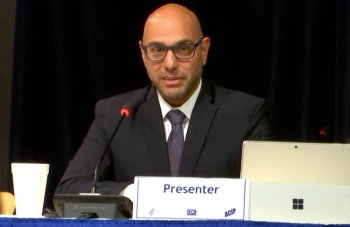
Physicians don’t want hands tied by opioid reform
Congress has taken what some are calling largely symbolic steps to address the issue of opioid abuse.
Congress has taken what some are calling largely symbolic steps to address the issue of opioid abuse. Both the U.S. House and Senate have passed opioid abuse legislation and were scheduled to conference in mid-May to come up with a final bill both chambers would support. However, neither chamber has authorized funding for the measures.
The White House called on Congress to appropriate $1.1 billion in emergency funding to address the issues of the overuse and abuse of opioid painkillers. Without funding allocations, âweâre back to where we wereâ says Kelly Brantley, MPH, a director at consulting firm Avalere Health in Washington, D.C. âI think this is feel-good legislation but it doesnât necessarily do all that it could do.â
While generally supporting Congressional action, physician organizations want whatever is enacted into law to avoid any mandates that would strip treatment decisions from individual providers.
The House in May passed 18 bills on the issue. One of those would mandate an interagency task force to review, modify and update best practices for pain management and prescribing pain medication. Another calls for treatment of pregnant women and infants born with opioid addiction, while still another provides a framework for creating drug treatment programs for veterans.
The Senate already has passed the Comprehensive Addiction and Recovery Act (CARA) with a wide range of provisions including education, addiction treatment and strengthening prescription monitoring programs. The Senate bill passed in March in an overwhelmingly bipartisan vote of 94 to 1.
The House, after consolidating its 18 bills into one so it could be conferenced with the Senate, approved the consolidated measure, also with a large, bipartisan majority.
Funding of any new programs could become an issue given that the Senate already has defeated a measure to provide additional dollars for CARA.
But with Washington focused on the issue, as evidenced by the Centers for Disease Control and Prevention (CDC) opioid prescribing guideline published in March, and the National Rx Drug Abuse and Heroin Summit at the White House, expect some legislation before the end of the current session, Brantley and others agree.
âThe president has made a lot of investment in talking about opioids and prescription drug abuse,â notes Brantley. Pointing to the CDC guidelines, she says that âweâre seeing action in a way I donât think weâve ever seen before,â on the opioid abuse problem.
Physician groups say they support action on the issue, as long as whatever passes does not tie doctorsâ hands when caring for patients.
The American College of Physicians (ACP) supports the CDC guidelines because they are guidelines rather than mandates, says Ryan Crowley, ACP senior associate for health policy. âWe believe physicians should have discretion to provide care based on the needs of the patient,â he says.
The American Academy of Family Physicians (AAFP) has similar concerns. AAFP President Wanda Filer, MD, FAAFP, says that âclearly the pendulum has swung too far in terms of prescribing pain medications,â but any effort to impose treatment standards could go too far the other way.
Patrice A. Harris, MD, the American Medical Associationâs (AMA) board chairwoman-elect who chairs the groupâs opioid abuse task force, notes that guidelines can have unintended consequences âwhich includes access and insurance coverage limitations for non-pharmacologic treatments, especially comprehensive care, and the potential effects of strict dosage and duration limits on patient care.â
John Frank is a contributing author. Do you think legislative action is needed to solve the opioid crisis? Tell us at [email protected].
Newsletter
Stay informed and empowered with Medical Economics enewsletter, delivering expert insights, financial strategies, practice management tips and technology trends — tailored for today’s physicians.















